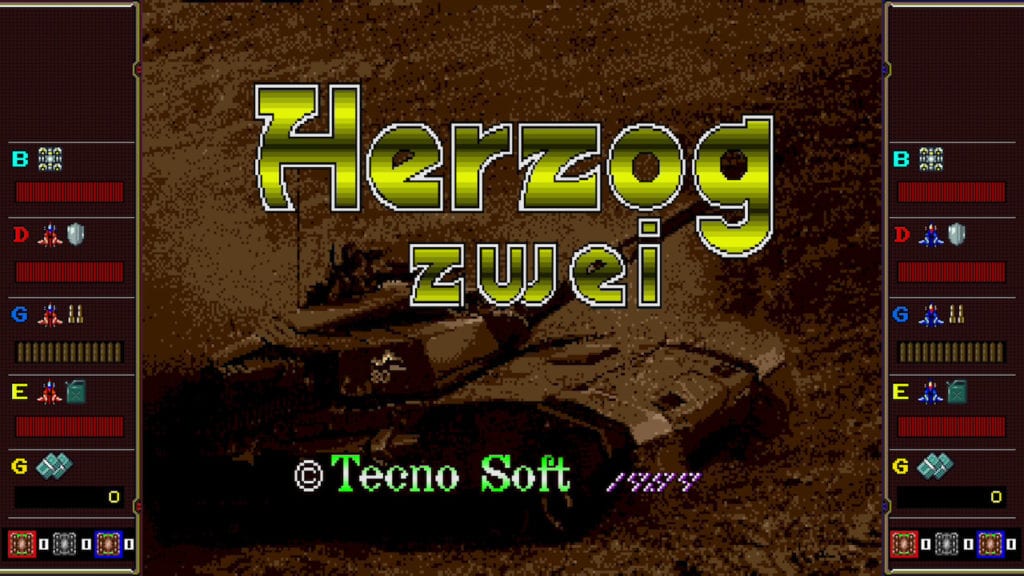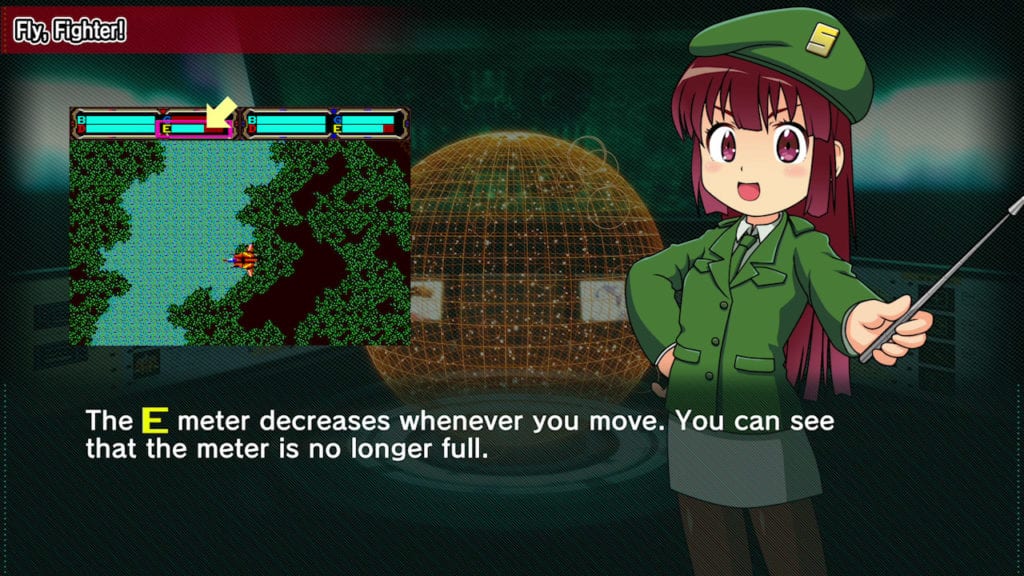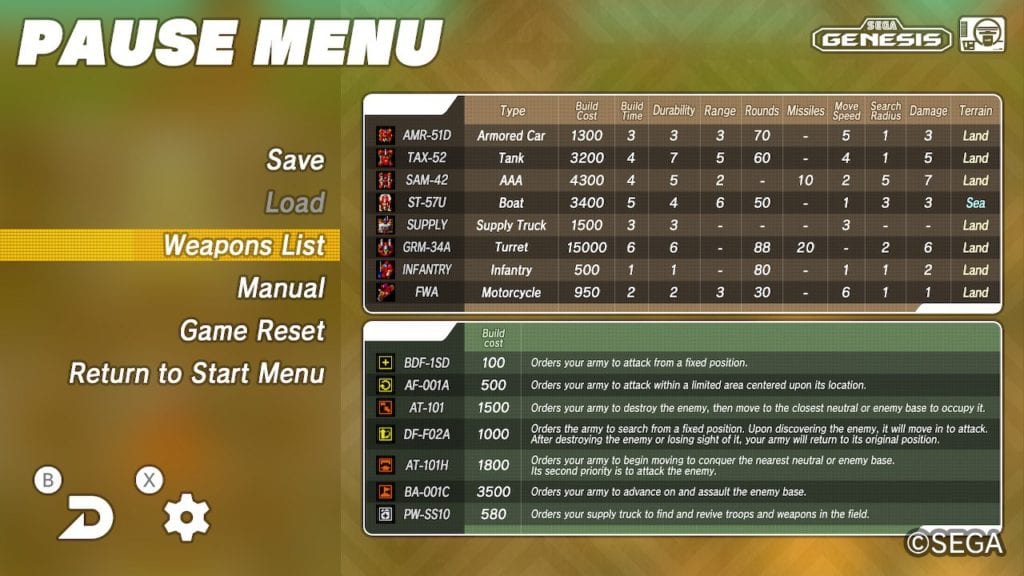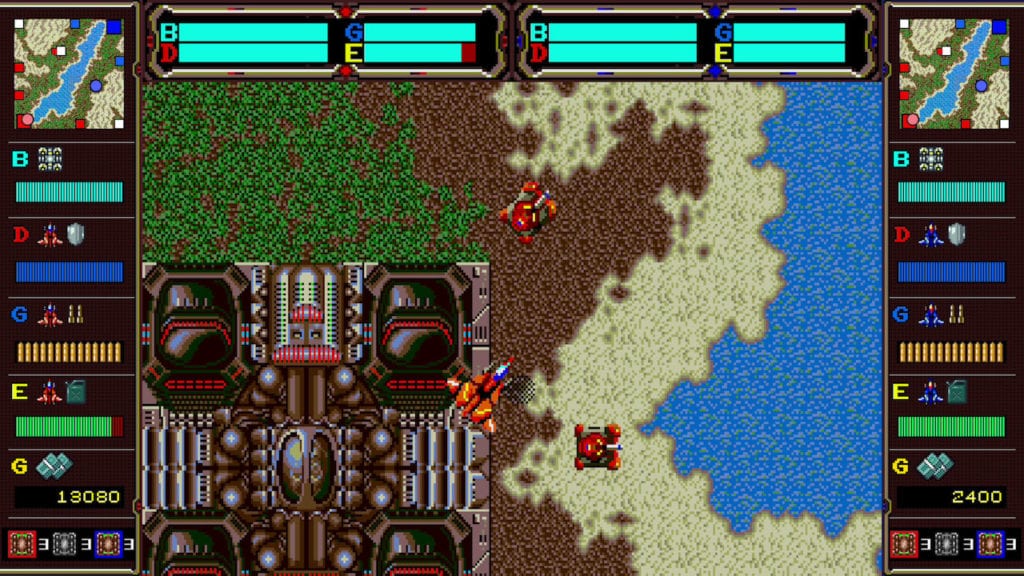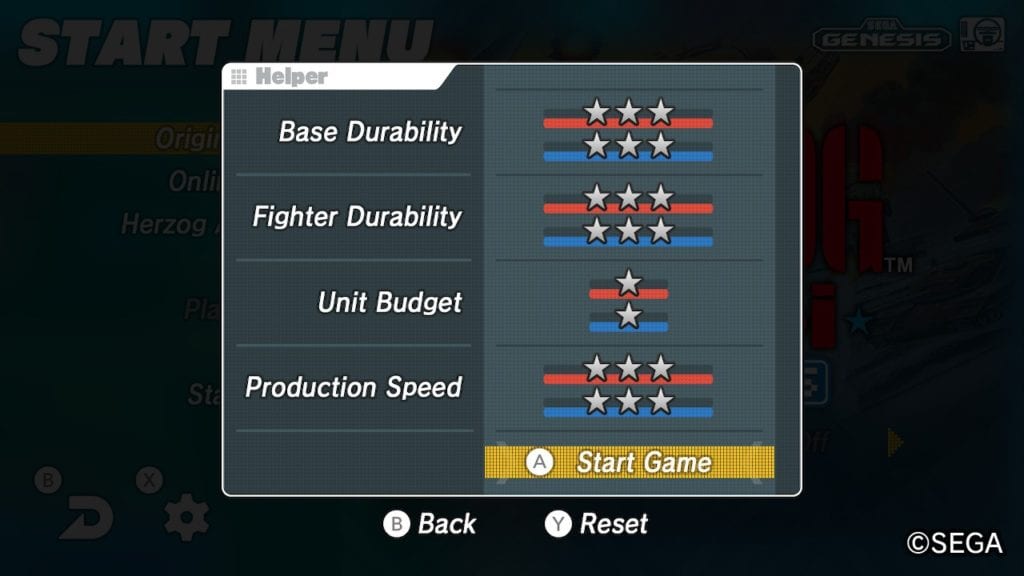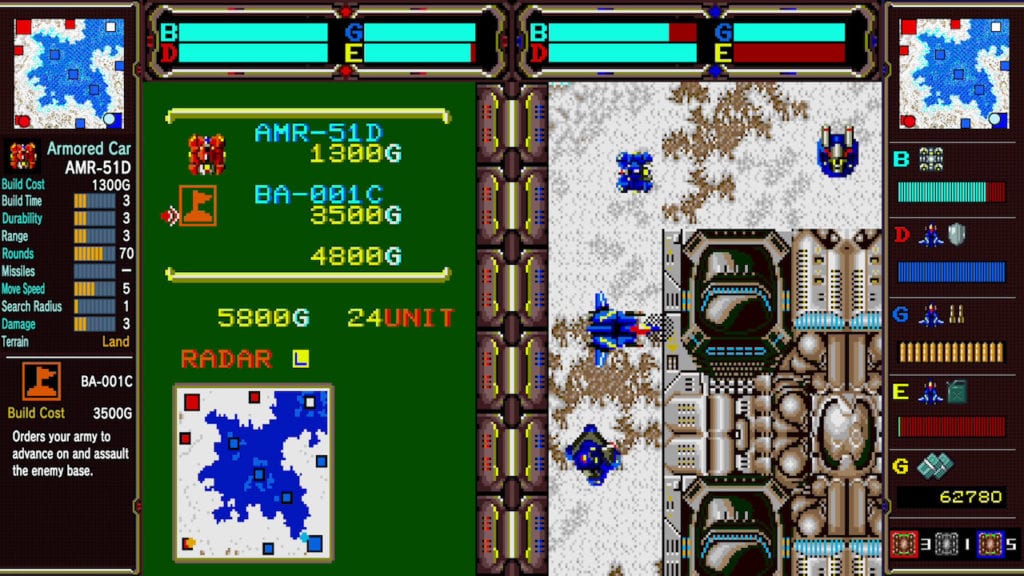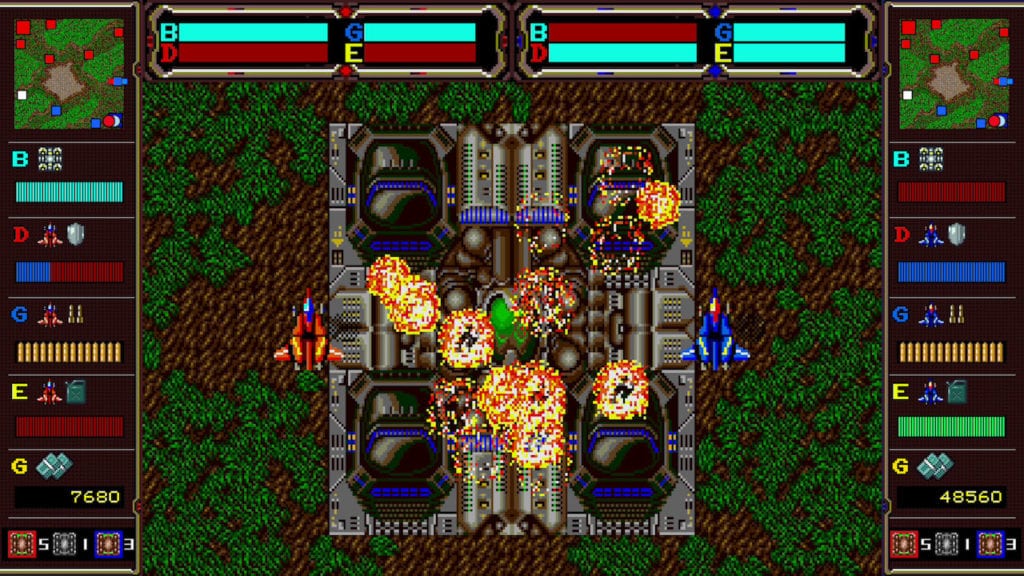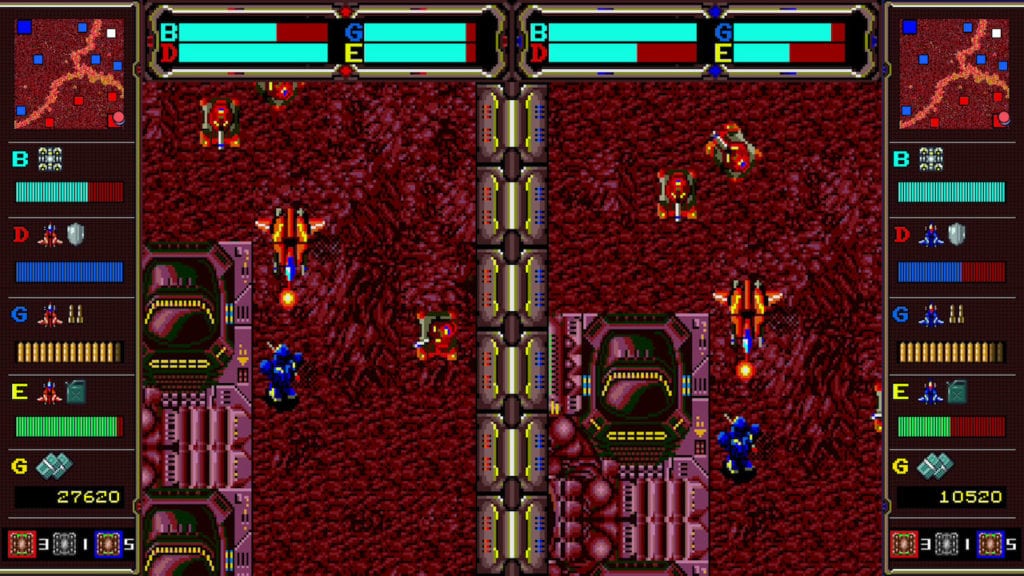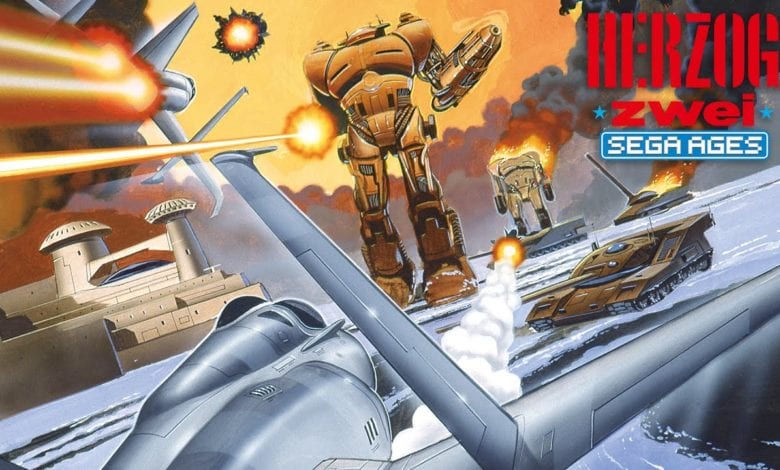
Review: SEGA AGES Herzog Zwei (Switch)
SEGA AGES goes out on a hard note.
It was a sad day when SEGA and M2 announced that their SEGA AGES line for the Nintendo Switch would be coming to an end. Fortunately, they’ve gone out on what seems to be a high note — and a hard one.
Herzog Zwei is a real-time strategy game originally made by Techno Soft and released on the Japanese SEGA Mega Drive in 1989, with the SEGA Genesis and worldwide release arriving in 1990. For those whose familiarity with strategy games is more in line with Fire Emblem or Langrisser, the difference is as described, with everything moving in real time, with or without player involvement, making for an arguably more challenging style of play.
In Herzog Zwei, you are able to join with either one of two opposing sides in a war, and your goal is basically to overrun and conquer the enemy’s main base on each of eight different maps, all while making sure to protect your own. But even with a fighter jet that transforms into a gun-toting robot, it’s easier said than done.
Before we get into that, though, here’s a quick rundown of the more general amenities that the SEGA AGES version of the game has to offer: A toggle between wide and split screen; an on/off toggle for reducing processing delay; controller layout customization; normal, fit, full, dot by dot, and vintage display modes; scan line and smoothing display effects, as well as both or neither; and various types of wallpapers, with one custom one we’ll get back to in a moment. You’ve also got save files which replace the original game’s password system, and multiplayer in splitscreen (like the original) and online, but nothing for local with two Switches.
Herzog Zwei is a product of a different time, one which has affected other entries in the SEGA AGES line far less considerably. In most of the titles thus far, you can basically look at the controls and pretty much know what to do. The Y button makes Alex Kidd punch, B makes Sonic jump, or the car in Virtua Racing accelerate, or rotate a blocks. Simple.
Now, you might think that since Herzog Zwei was made during that period when Genesis controllers only had three buttons, it would be similarly simple, but no. This was a game from a time when, rather than having everything laid out for you in-game, you either had to figure it out on your own, or read (assuming you had it) the included manual.
That’s where M2’s biggest additions to the SEGA AGES version of the title come into play. First is “Herzog Academy,” a tutorial comprised of 12 different lectures by an enthusiastic anime girl that goes over how the game works. And whether you have played the game before or not, you’ll probably want to give this a look, as it’s not only filled with some funny little moments, but there are several references to M2’s entire (I think) body of work with SEGA AGES on the Switch.
It really kind of solidifies this as the capstone on the entire endeavor, like everything has been building up to this final moment. It’s a little sad, but also kind of beautiful in a way.
However, I digress. Something else worth noting is that this game is filled with all sorts of abbreviations and acronyms — so many that your virtual tutor isn’t even sure what everything really stands for (she takes her best guesses at many, though, in ways that are fairly easy to remember). Much like in their release of Phantasy Star, M2 has included a menu which helps break down all the code names and abbreviations for you into actual, functional English, so you’ll have a better idea of what you’re doing when you’re in the midst of battle — to say nothing of all sorts of other helpful stats that aren’t quite as clearly laid out for you in the original game program.
But wait, there’s more!
Remember the one custom wallpaper for the game I mentioned earlier? It’s more than just a pretty picture, but actually functional as well.
Some of the information here is redundant with the meters featured at the top of the screen, but some of it gives other stats at a glance, reducing the need for pulling up the in-game menu to check. Plus, it can provide quick references for some of the units and attacks you’re looking at before executing, all of which can be quite useful when you consider the real-time nature of the game.
If all that wasn’t enough for you, the SEGA AGES version of Herzog Zwei has one other ace up its sleeve: Helper Mode.
By utilizing Helper Mode, seen above, you can tweak the various settings to your liking before engaging in battle against the computer-controlled opponent. Or, alternatively, you can make the game even harder.
With that out of the way, the core gameplay loop involves two opposing main bases on each of the game’s eight maps, with several unclaimed outposts scattered about. You cannot make an attack on the opposing base for two main reasons: One, your Command Unit cannot travel that far on the amount of fuel it has, and two, Command Units cannot take out enemy bases.
As such, what you need to do is use a combination of your different units to a) occupy outposts, b) defend outposts and your main base from attack, and c) press the attack further towards the main enemy base until such time as you’re able to take it over. By expanding your reach with a greater number of outposts, you’ll have more places to refuel your Command Unit, allowing you to move even further into enemy territory.
While the various other units follow the commands issued to them on their own (and can have their marching orders changed, albeit at a cost), the Command Unit is the only one you have full control over at all times. As such, it’s up to you to use the Command Unit to move them where they need to go, although carrying a unit consumes fuel at a greater rate, making it a tricky balancing act to get units where they need to go without blowing yourself up (which happens if you run out of fuel, or life, warping you back to the main base and consuming more of your time as you wait for recovery and getting back to where you were).
Oh, and you’ll have to contend with the enemy’s units as well. There are two types of offense, ground-based and air based, and the two don’t tend to mingle. Ground-based units like tanks take on infantry, other tanks, and, well, anything on the ground. Then you’ve got surface-to-air missile units, which are ideal for taking out the enemy Command Unit, which you’ll sometimes encounter as it zips around the map, making its own moves. You can partake in skirmishes yourself, converting to robot mode to take out ground units, and jet mode if you’re up for a little bit of top-down dogfighting action.
Now, here’s the thing about this game: It’s hard. Did I mention it’s hard? As hard as Knuckles says he is like nails. Herzog-chan (is that her name? She didn’t really say. I’m calling her that now) even says in the Herzog Academy tutorial, “Many commander candidates went into battle not knowing anything and paid the ultimate price… They tossed away the controller yelling, “I don’t get it!”
And here is where I have a bit of an embarrassing confession to make: This game whooped me, but good. After about an hour of play, things basically ended in a stalemate…
In the tutorial.
Things were going well until the 11th lecture at Herzog Academy, when things were placed into my hands for the final push against the enemy base: Every outpost on the map was under my control, and I just had to create some Infantry units and have them take over the main base.
I have no idea what went wrong.
The base repelled my infantry, then managed to take over the unguarded outpost I was using to create units, pushing me back. While I worked to reclaim that outpost — a little clumsily, I’ll admit, as fumbling with commands really doesn’t work out well in real-time strategy — the enemy Command Unit was taking over the outpost on the other side of the base. Then another, and another. This went on for a while, and before I knew it, I’d lost half the map and was receiving warnings that my main base was under attack! So I had to juggle between trying to repel attackers there and regaining the other outpost I’d lost and hopefully pressing the attack on the enemy’s main base in order to end it all.
The only reason it was a stalemate, I would come to discover, was because the tutorial restores your main base’s health when it drops past a certain amount. Also, you’re given unlimited funds to play with. That probably helped, too.
So, yeah. This game totally kicked my ass.
As a result, I don’t really feel comfortable giving this game a proper score. Near as I can tell, though, it’s the best version of the game you’re likely to find, particularly if you’ve never played the original and need something to help break you in. But if you want a challenge (and don’t forget, you can make it more difficult with the Helper Mode), then you’ll definitely find it here.
Still, if SEGA and M2’s SEGA AGES track record is anything to go by, you’re probably in good hands if this sounds like your kind of game.


